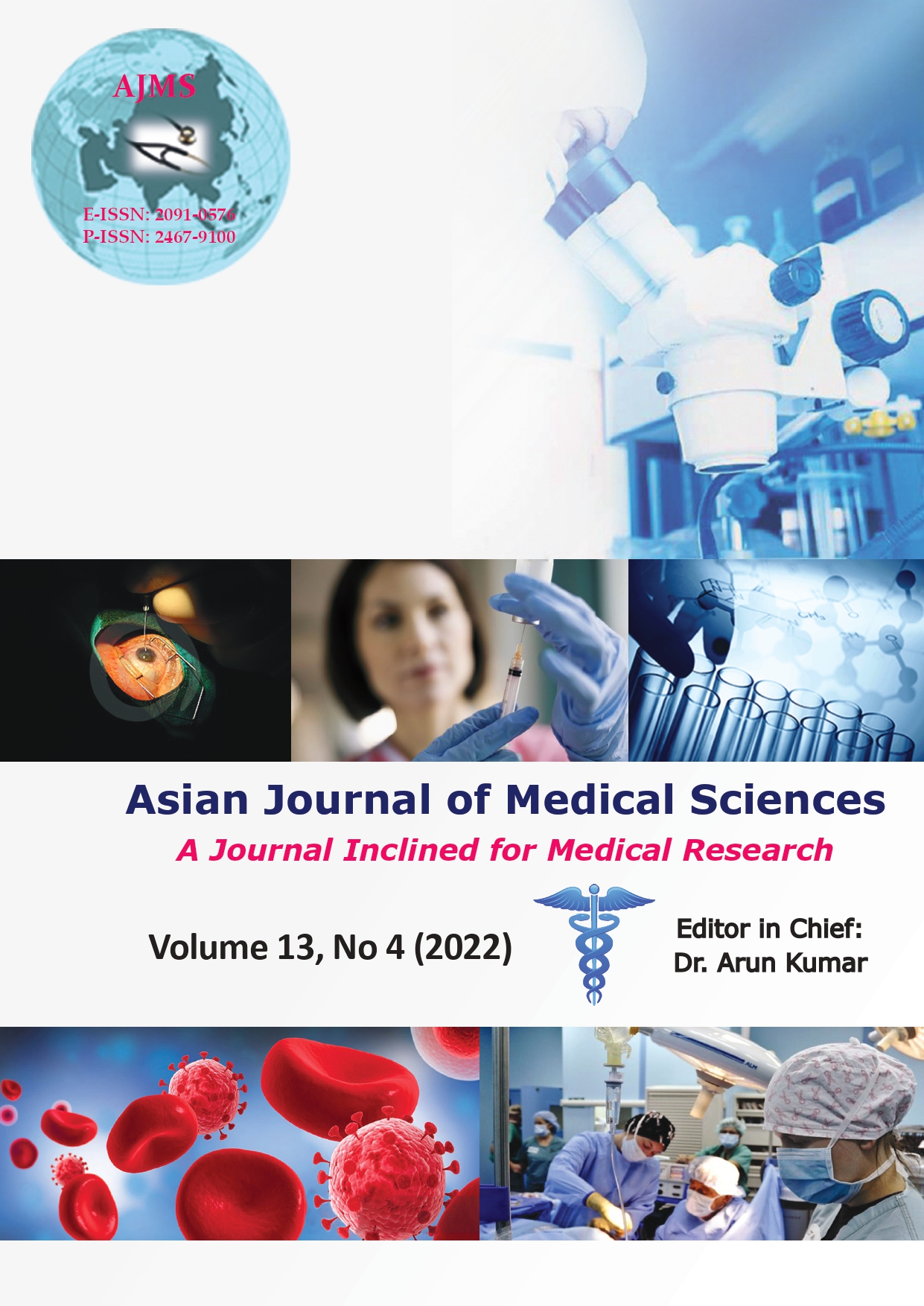Correlation between radiographic adenoidnasopharyngeal ratio and clinical symptoms of adenoid hypertrophy in a tertiary health institution in North West Nigeria
Keywords:
Adenoid hypertrophy, Adenoid nasopharyngeal ratio, Post-nasal space radiograph, Symptomatology scoresAbstract
Background: Adenoid hypertrophy is the most common cause of nasopharyngeal airway obstruction in children. The radiographic evaluation of the adenoid hypertrophy using the adenoid-nasopharyngeal ratio is a simple, economical, and reliable method in determination of the position, size, and shape of the adenoids.
Aims and Objectives: The study was conducted to determine the correlation between radiographic adenoid-nasopharyngeal ratio and clinical symptoms of adenoid hypertrophy.
Materials and Methods: This crosssectional prospective study was carried out in the Department of Radiology, Usmanu Danfodiyo University Teaching Hospital, Sokoto, North West Nigeria. A total of 90 consecutive patients aged between 3 and 12 years with clinical symptoms of adenoid hypertrophy were included in the study. All the patients had plain radiography of the post-nasal space. The adenoid-nasopharyngeal ratio (ANR), which is the ratio of the adenoid thickness measured from the maximum convexity of the adenoid to the margin of the basiocciput and the nasopharyngeal depth measured from the posterior border of the hard palate to the anteroinferior aspect of the sphenobasioccipital synchondrosis (Fujioka method), was calculated and scores obtained for each patient were graded into mild (0.50–0.62), moderate (0.63–0.75), and severe (0.76–0.88). The clinical symptoms assessed included snoring, mouth breathing, sleep apnea, otitis media, and recurrent upper airway infections. Each symptom was scored on a 4-point scale and the sum of the scores was graded into mild (0–5), moderate (6–10), and severe (11–15). The data were collected using a structured questionnaire and analyzed using Statistical Package for the Social Sciences version 22.
Results: A total of 90 patients were involved in the study, their age ranged between 3 and 12 years (mean=6.11±2.77); and male-tofemale ratio was 2:1.5. The mean ANR score was 0.71±0.11 and that of the clinical symptoms score was 8.67±3.23. ANR correlated significantly with the clinical symptoms scores (r=0.901; P<0.0001). The association was significant at ANR grading for mild (χ2=20.91; P=0.003) and severe (χ2=11.39; P=0.022).
Conclusion: This study shows that radiographic ANR can predict the degree of nasopharyngeal airway obstruction especially for mild and severe grading. A severe nasopharyngeal airway obstruction as determined by both ANR and symptom’s severity was observed in the 3–5 years age group.
Downloads
Downloads
Published
How to Cite
Issue
Section
License
Copyright (c) 2022 Asian Journal of Medical Sciences

This work is licensed under a Creative Commons Attribution-NonCommercial 4.0 International License.
Authors who publish with this journal agree to the following terms:
- The journal holds copyright and publishes the work under a Creative Commons CC-BY-NC license that permits use, distribution and reprduction in any medium, provided the original work is properly cited and is not used for commercial purposes. The journal should be recognised as the original publisher of this work.
- Authors are able to enter into separate, additional contractual arrangements for the non-exclusive distribution of the journal's published version of the work (e.g., post it to an institutional repository or publish it in a book), with an acknowledgement of its initial publication in this journal.
- Authors are permitted and encouraged to post their work online (e.g., in institutional repositories or on their website) prior to and during the submission process, as it can lead to productive exchanges, as well as earlier and greater citation of published work (See The Effect of Open Access).




